Pedagogy must lead technology….?
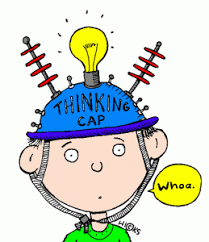
Over the years, as I have developed as a teacher, I have been a strong advocate of the principle that ‘pedagogy must lead the technology’.

I found Cousin’s paper, ‘Learning from cyberspace’ remarkably interesting, as she sets out to critique this very mantra that I have chanted over the years. My new mantra is going to be ‘technology and pedagogy unite!’
Here are a few thoughts:
‘The medium is the pedagogy’.
This seems to be counter-intuitive, as we tend to think of technology being the medium through which we communicate and teach. Let’s think about the etymology of the word ‘pedagogue’.

Terracotta statue of the pedagogue and the boy 3rd century BC
Literally, in ancient times, it was the slave who accompanied the child to school. It then became the person who led, nurtured, and guided, it became the teacher. This original meaning fits in with Cousin’s argument that pedagogy is the medium. To think of pedagogy as the medium puts the onus well and truly back on the teacher. The teacher cannot use the excuse that any other medium of communicating and teaching (such as technology) is responsible for teaching and learning. It is how we teach, not what with, that is important.
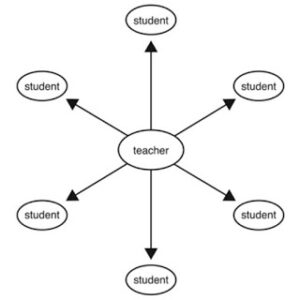
Didactic Learning, from E-Learning Ecologies Kalantzis and Cope (2017)
The medium we use to deliver teaching and learning needs to shape how the learning occurs. I found this blog Beyond Blended Learning particularly interesting. Pedagogy can take various forms. Didactic pedagogy and relexive pedagogy are examined, with the conclusion that reflexive pedagogy is ‘better’. (Kalantzis and Cope (2017) coined those phrases). If didactic pedagogy is leading the technology, the technology often does not add to the learning experience, rather it reinforces the didactic nature of the pedagogical method.
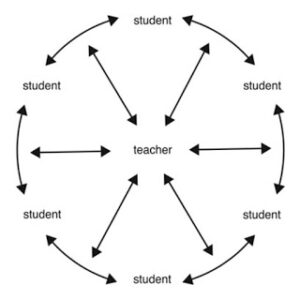
Reflexive Learning, from E-Learning Ecologies Kalantzis and Cope (2017)
Reflexive pedagogy puts the learner firmly in driving seat, with the teacher acting more as a guide and mentor. Just as there is more of a synergy between teacher and learner, so too can technology be an enhancement for the pedagogical medium that is intrinsically more dynamic.
‘Technologies work dynamically with pedagogies, not for them and in the process they become mutually determining’ (Cousin 2005 p118).
This dynamic relationship is too often forgotten. The commonly held notion of the relationship between technology and education is one of instrumentalism. This is particularly the case if a more didactic, conservative mode of teaching is employed. Covid-19 has shown that amongst excellent and innovative online teaching, all too often teachers have tried to replicate the conventional classroom and the use of technology has been skewed towards enacting traditional didactic methods, albeit online.
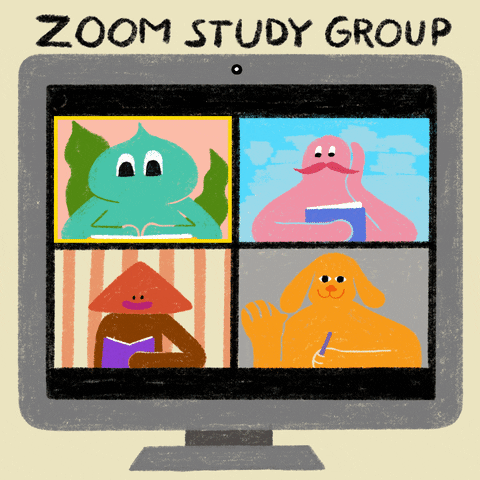
If technology is allowed to become more intrinsically connected in a ‘reflexive’ style of pedagogy, then the relationship with education will immediately become dynamic. We need to go back to basics and re-think our pedagogical styles to enable a more fruitful and interesting working relationship with technology in order to to implement Cousin’s critical point of a new ‘learning ecology’, where technology and pedagogy co-exist dynamically. The technology can then enhance metacognition, collaboration, active problem solving and can add a multi-modal layer to learning.
For the first time in my life-long learning, I can source multi-modal resources to contribute to my understanding; the relationship that my reflexive learning has with technology is increasingly dynamic and ‘mutually determining’.
What would we need to change?
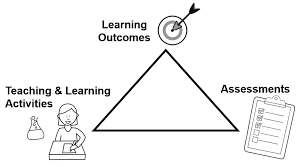 A fundamental cornerstone of modern educational practice is that of constructive alignment. I think technology can be part of that alignment in an imaginative way. Thereby, it can be allowed to work dynamically with the pedagogy. Unfortunately, teachers don’t necessarily realise that in practice. As a result, they resort to technology as a tool, and then delight in declaring that it would be far better if pedagogy led technology. Teachers could and should exploit technology in a more constructivist way in their day-to-day teaching. Such as exploiting Minecraft for educational purposes. (I get the impression the American education system and the Australians are far better at this than the British?)
A fundamental cornerstone of modern educational practice is that of constructive alignment. I think technology can be part of that alignment in an imaginative way. Thereby, it can be allowed to work dynamically with the pedagogy. Unfortunately, teachers don’t necessarily realise that in practice. As a result, they resort to technology as a tool, and then delight in declaring that it would be far better if pedagogy led technology. Teachers could and should exploit technology in a more constructivist way in their day-to-day teaching. Such as exploiting Minecraft for educational purposes. (I get the impression the American education system and the Australians are far better at this than the British?)
The Students
I think we also need to consider the students’ needs and behaviour when learning.  Students learn best in a non-linear way, which modern-day technology absolutely enables. The learner is a key player in how technology is used to support pedagogy, and one that is too often forgotten.
Students learn best in a non-linear way, which modern-day technology absolutely enables. The learner is a key player in how technology is used to support pedagogy, and one that is too often forgotten.
The metaphor of the rhizome is a strong one used by Cousin to visualise the characteristics of the internet. The internet has been born of the knowledge it is communicating, working dynamically and inextricably with pedagogical as well as content knowledge. It mirrors the multiple layers and connections that learners and knowledge have .
Is the internet a pedagogical medium in its own right? The ultimate example of the synergy between pedagogy and technology?
Minecraft and Ars Memoria

Ars Memoria – an etching by Fludd 1621
Cousin reminds us of Ars Memoria when the mind was used as a virtual ‘database’; arguably as a form of technology (if we think of the Greek definition of technology) to enable learning. I interpret this as an interesting illustration of an ultimate technology (the mind) working dynamically with learning.
My final thought is to ask whether Minecraft is a modern form of ‘Ars memoria’? Imagination turned into a structured database and linked to images – a virtual construction of the ‘complex technology of the mind’.




More interesting and helpful insights here! Your reflections raise interesting questions about the role and position of the teacher in this ecology of learning (with reference to Biesta) via reflexive journeys towards the intended learning outcomes (we are teaching and learning within a formal education context after all). Perhaps as a nurtured and ‘gardened’ rhizome?
I like the idea of the Ars Memoria. It reminds me of some experimental desktop interfaces in the early 2000s that were based on a 3D cityscape – different buildings gave access to different folders, system preferences etc….